-
New software to improve explosive detection
New software developed by Peaklet Analysis with the aid of a Western Kentucky University (WKU) math professor could help existing explosives detectors improve their detection abilities
-
-
Nano sensor detects minute traces of plastic explosives
Scientists have developed an extremely sensitive explosives sensor that is capable of detecting even slight traces of the high-explosive chemical compound pentaerythritol tetranitrate (PETN); terrorists had employed PETN in several attacks on commercial aircraft
-
-
Full-body scanning for the shy
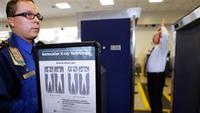
The Transportation and Security Administration will soon launch Full Body Scanning 2.0 at several New York area airports; the new software, known as Automated Target Recognition (ATR), will auto-detect items that could pose a potential threat that passengers might be carrying under their clothes, but the suspicous items will be shown against a generic outline of a person for all passengers
-
-
Old fashioned methods best for detecting IEDs
U.S. troops in Afghanistan and Iraq have resorted to an old method to detect improvised explosive devices (IEDs); using long poles with hooks on the end, troops feel around in the dirt to detect any IEDs
-
-
WWII bombs still plague Germany
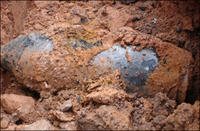
For one bomb squad in Germany the Second World War never ended; members of Germany’s War Ordnance Disposal Service are racing against time to locate and safely defuse the hundreds of thousands of unexploded bombs dropped by Allied war planes that still litter the country
-
-
Airport explosive detection machines not up to regulation
A recent Government Accountability Office (GAO) report reveals that airports around the United States have failed to meet federal requirements for explosives detection systems and government regulators have done little to enforce them
-
-
Animal kingdom's alternatives to full-body scanners
A typical full-body scanner costs upward of $150,000, and critics maintain that for this high price-tag we get a detection system which is not fool-proof and which may be risky for our health; they point out that experience in IED diction in Iraq and Afghanistan shows that dogs are superior to scanners in detecting explosives — and that they are much cheaper ($8,500 for a dog plus training) and do not pose any health risk; some researchers say that mice and bees are even better bomb sniffers than dogs
-
-
Sensors printed on wetsuits detect explosives, other hazards
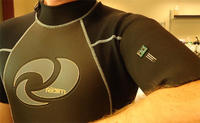
UC Sand Diego researcher has successfully printed thick-film electrochemical sensors directly on flexible wetsuit material, paving the way for nano devices to detect underwater explosives or ocean contamination; UCSD has a full U.S. patent pending on the technology, and has begun talks on licensing the system to a Fortune 500 company
-
-
TSA could begin searching for explosives hidden inside you
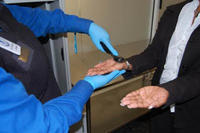
Government intelligence officials are now warning airlines that terrorists could be using surgically implanted explosives to bypass security measures; there is no information regarding a specific plot or threat, but airlines could begin to implement additional screening procedures as the current body scanners cannot effectively detect bombs hidden inside an individual; last year, al Qaeda operatives in Iraq implanted two dogs with explosives, but the dogs died before they could loaded onto a U.S.-bound plane
-
-
New airport scanner can detect liquid explosives
Passengers boarding airplanes could soon be walking through security checkpoints carrying liquids once more thanks to a high tech scanner capable of detecting liquid explosives; the device, developed by U.K. based Kromek, is capable of identifying dangerous liquids within seconds and does not require the container to be opened
-
-
Documents reveal TSA ignored dangers of body scanners
The Electronic Privacy Information Center (EPIC) says that is has official documents that reveal the Transportation Security Administration (TSA) deliberately ignored warnings that airport body scanners pose a health risk; the internal documents and email exchanges show that TSA officials brushed aside concerns that employees raised after noticing that a large number of workers had cancer, strokes, and heart disease after working near the body scanners
-
-
Navy funds development of new explosives detection technology
The Navy recently awarded researchers at Texas Tech University a four year $1.2 million grant to develop a more effective method to detect explosive materials; the project is spearheaded by four Texas Tech professors specializing in chemical engineering; one professor explained, “In layman’s terms, basically we’re trying to enhance detection for explosives”
-
-
Mud triggers Logan alarm
Scanning machines at Logan Airport detected minute traces of nitrates in a checked luggage, and sounded the alarm; two gates were evacuated as a precaution; police found that the nitrates emanated from mud sample a Honk Kong University doctoral student was carrying in the luggage; the samples were to be used in research
-
-
Airport Checkpoint of the Future unveiled
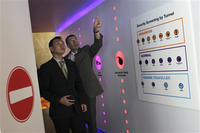
Attendees of the 67th annual Air Transport Association (IATA) annual meeting and World Air Transport Summit in Singapore got a first look at a prototype version of the airport security Checkpoint of the Future; the prototype checkpoint is specifically designed to allow passengers to pass through without having to remove their shoes or get patted down; to make travelling more pleasant and less invasive, the new security checkpoint is outfitted with a suite of sophisticated sensors including eye scanners, x-rays, and metal and liquid detectors
-
-
New detection system uses ultraviolet light to spot explosives
More than 625 million travelers will take to the air before 2011 is over; the passengers’ carry-on luggage and checked baggage are screened for explosives — but University of Florida researchers say there is a better way to do so; the UF scientists say they have developed the first explosive detection system in the world that utilizes ultraviolet light to zero in on specks of dangerous explosives found in and on luggage; the explosives detection market is estimated to exceed $3 billion in the U.S. alone
-
- All
- Regional
- Water
- Biometrics
- Borders/Immig
- Business
- Cybersecurity
- Detection
- Disasters
- Government
- Infrastructure
- International
- Public health
- Public Safety
- Communication interoperabillity
- Emergency services
- Emergency medical services
- Fire
- First response
- IEDs
- Law Enforcement
- Law Enforcement Technology
- Military technology
- Nonlethal weapons
- Nuclear weapons
- Personal protection equipment
- Police
- Notification /alert systems
- Situational awareness
- Weapons systems
- Sci-Tech
- Sector Reports
- Surveillance
- Transportation
Advertising & Marketing: advertise@newswirepubs.com
Editorial: editor@newswirepubs.com
General: info@newswirepubs.com
2010-2011 © News Wire Publications, LLC News Wire Publications, LLC
220 Old Country Road | Suite 200 | Mineola | New York | 11501
Permissions and Policies
Editorial: editor@newswirepubs.com
General: info@newswirepubs.com
2010-2011 © News Wire Publications, LLC News Wire Publications, LLC
220 Old Country Road | Suite 200 | Mineola | New York | 11501
Permissions and Policies
